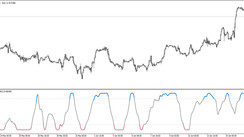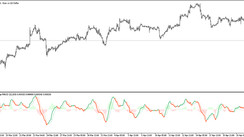Nowadays, traders have many options for where to invest their money and what to trade, and there are literally thousands of instruments available for trading through online brokers when individual stocks are taken into consideration in addition to currencies, commodities, bonds, and indices.
Each of these different instruments is affected by different and unique factors which requires a different approach for trading each of them.
Below we look at each of the different assets and briefly discuss the main factors that drive their prices.
Currencies – Forex
The most frequently traded currencies are USD (US Dollar), EUR (Euro), JPY (Japanese Yen), GBP (British Pound), CHF (Swiss Franc), AUD (Australian Dollar) and CAD (Canadian Dollar).
A nation’s currency is controlled by the country’s central bank and is ultimately backed by its government.
A currency’s value will tend to reflect the economic performance of its country and often acts as a proxy for the overall situation in a country – both political and economic.
A strong economy and political stability are good for the currency, while political tensions, wars, and contracting economies normally cause a currency to depreciate in value as money is flowing out of that country.
Over the short to medium term interest rates set by the central bank have a big impact on Forex exchange rates which is why Forex traders are closely watching every word and action from the central banks.
Shares – Stock Equities
For a single stock’s price, the biggest factors that drive the price are the company’s earnings and revenues. The better the company is doing, the more profits it will make and that much higher its stock price will go.
Unveiling a new product that spurs excitement among people also often causes a stock to rise as investors are expecting revenues to increase because of this great new product.
On the other hand, scandals, fears of a company closing down, or other negative news toward a particular company can cause its stock price to plummet.
In addition, the overall state of the economy or the particular sector of the company will also tend to affect its stock price in a broader sense.
Stock Indices
Indices are a broad measure of the performance of stocks in one country (e.g the S&P 500 in the US or FTSE in the UK). In this regard, how the stock price of a specific company trades is not so important for the whole index but more so the overall economic conditions in the country and thus the overall performance of companies in that country.
Stock indices also act as a gauge for risk appetite and risk aversion and they are normally negatively correlated with the price of Gold.
ETFs
Exchange traded funds (ETFs) are investment funds that are traded on exchanges in the same way like stocks. ETFs invest in stocks, bonds, commodities and other assets and therefore their price is affected by the performance of their portfolio.
Bonds
Bonds are debt securities. There are 2 main types of bonds – government and corporate bonds both of which are traded on the secondary bond market.
Bonds have two components to them – yields and prices which are always moving in the opposite direction. When prices are rising yields are falling and vice versa.

Generally, government bonds are known as the most secure investment and because of this they act as safe havens and appreciate during times of uncertainty (positively correlated with the price of Gold). Other than times of risk aversion, bonds are generally affected by where interest rates and inflation are moving.
Higher inflation and higher interest rates drive yields higher which is negative for bond prices.
Commodities
Supply and demand are the most important factors that affect commodities. Since they have to be produced physically in different parts of the world, shortage of supply can frequently drive the price up, or an oversupply of a particular commodity can cause its price to fall rapidly (e.g. oil in 2014).
Demand is, of course, the other side of the story and naturally rising and falling demand correspond with rising and falling prices.
Different groups of commodities exist, the most important of which we briefly discuss below.
Energy
These include WTI crude oil, Brent oil and natural gas as the most important in the group.
Heating oil, Gasoline, and Ethanol are also counted in the energy group.
When trading energy commodities it’s important to follow the major oil producing countries – mainly in the middle east.
Decisions taken by the Organization of the Petroleum Exporting Countries (OPEC) also have a major effect on oil and gasoline prices.
In addition, frequent military conflicts in the Middle East can disrupt the oil supply which causes the price of oil to rapidly rise.
Agricultural
Sugar, wheat, corn, rice, soybean, oats milk and cotton are some of the commodities in this group.
While ultimately supply and demand determine prices in all markets, the factors that affect supply and demand in various markets are different.
Thus, a big factor for agricultural commodities are weather conditions and other natural conditions.
For example, harsh weather conditions or a natural disaster can cause a shortage of supply and therefore a higher price for a certain agricultural commodity.
Industrial Metals
Copper, lead, aluminum, iron are some of the industrial metals.
Global growth is very important on the demand side, as strong global economies mean wealthier countries which in turn translates to higher demand for manufactured products of all kinds.
Industrial metals are a primary resource for the manufacturing sector so traders closely follow trends in mining, manufacturing activity, GDP growth and China – the leading producer of manufactured goods in the world.
Precious Metals
Precious metals are used as safe havens against market downturns, political conflicts and all in all pretty much any other dark scenario. In addition, they serve as a hedge against inflation and potentially hyperinflation which is generally a very bad situation for the economy.
So, although the supply side matters for precious metals, like how much gold is produced in top producing countries, the demand side often matters more as traders usually pile into gold and other precious metals when risks rise and there is a general risk-off mood in the market.
Gold acts as the ultimate safe-haven trade and usually raises the most of all safe-haven assets in times of risk aversion.





